Ingest Data into Microsoft SQL Server
Set up SQL Server and Create Tables
Set up an SQL Server database and set the user name and password to sa/mqtt_public. Take MacOS X as an example:
docker run -e 'ACCEPT_EULA=Y' -e 'SA_PASSWORD=mqtt_public' -p 1433:1433 -d mcr.microsoft.com/mssql/server:2017-latestEnter the SQL Server container and initialize the SQL Server table:
Setting up SQL Server sa password
$ /opt/mssql-tools/bin/sqlcmd -S localhost -U sa -P mqtt_public -d masterCreate the "mqtt" database:
CREATE DATABASE mqtt;
go;Create the t_mqtt_msg table:
USE mqtt;
go;
CREATE TABLE t_mqtt_msg (id int PRIMARY KEY IDENTITY(1000000001,1) NOT NULL,
msgid VARCHAR(64) NULL,
topic VARCHAR(100) NULL,
qos tinyint NOT NULL DEFAULT 0,
payload NVARCHAR(100) NULL,
arrived DATETIME NOT NULL DEFAULT CURRENT_TIMESTAMP);
go;Configure the ODBC driver in Mac:
$ brew install unixodbc freetds
$ vim /usr/local/etc/odbcinst.ini
[ms-sql]
Description = ODBC for FreeTDS
Driver = /usr/local/lib/libtdsodbc.so
Setup = /usr/local/lib/libtdsodbc.so
FileUsage = 1Configure ODBC driver in CentOS:
$ yum install unixODBC unixODBC-devel freetds freetds-devel perl-DBD-ODBC perl-local-lib
$ vim /etc/odbcinst.ini
# add as below
[ms-sql]
Description = ODBC for FreeTDS
Driver = /usr/lib64/libtdsodbc.so
Setup = /usr/lib64/libtdsS.so.2
Driver64 = /usr/lib64/libtdsodbc.so
Setup64 = /usr/lib64/libtdsS.so.2
FileUsage = 1Configure ODBC dirver in Ubuntu:
$ apt-get install unixodbc unixodbc-dev unixodbc-bin tdsodbc freetds-bin freetds-common freetds-dev libdbd-odbc-perl liblocal-lib-perl
$ vim /etc/odbcinst.ini
# add as below
[ms-sql]
Description = ODBC for FreeTDS
Driver = /usr/lib/x86_64-linux-gnu/odbc/libtdsodbc.so
Setup = /usr/lib/x86_64-linux-gnu/odbc/libtdsS.so
FileUsage = 1Create Rules
Open EMQX Dashboard and select the "Rules" tab on the left.
Fill in the rule SQL:
SELECT * FROM "t/#"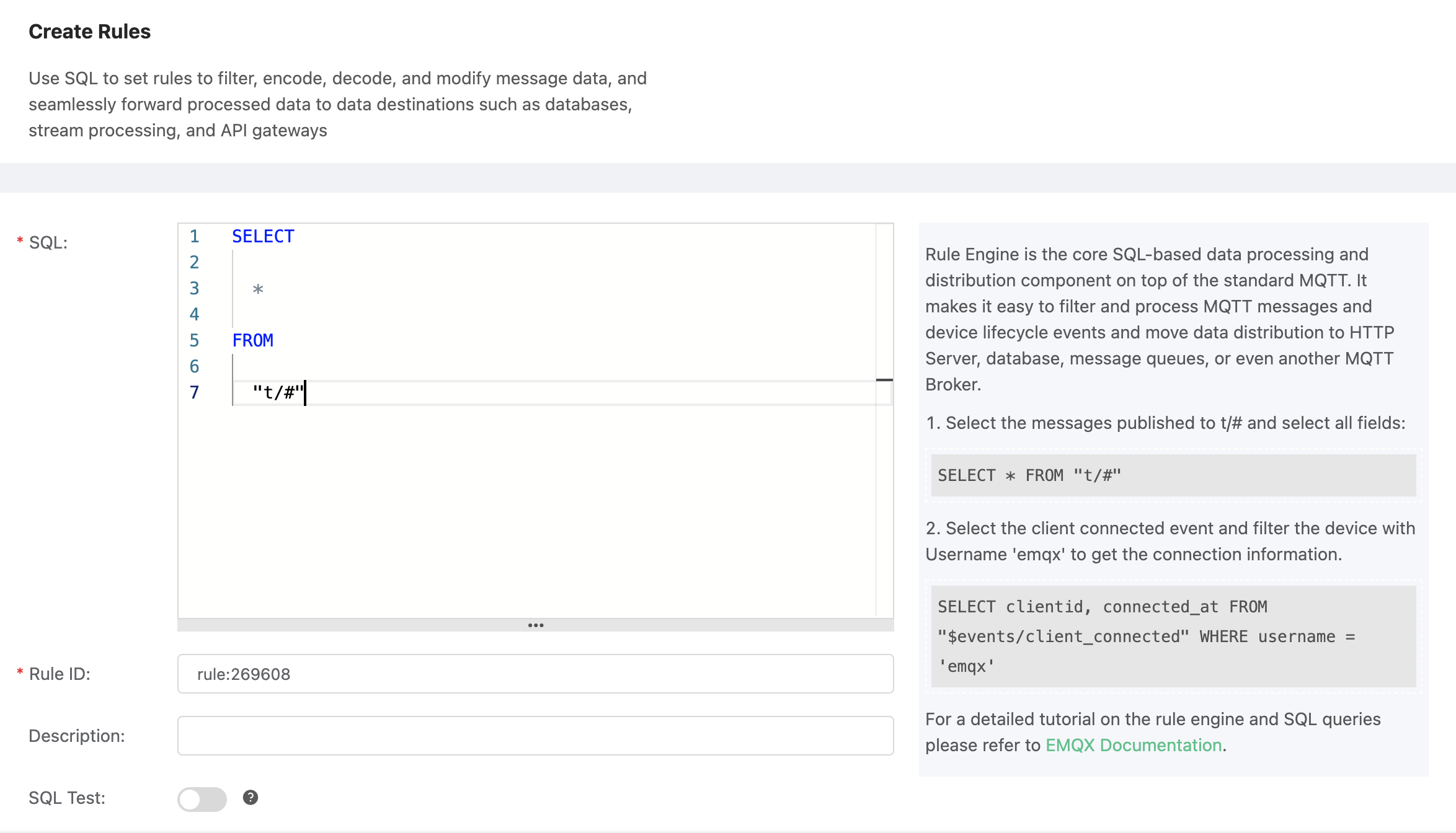
Add Actions
On the "Response Action" interface, select "Add", and then select "Save Data to SQLServer" in the "Action" drop-down box.
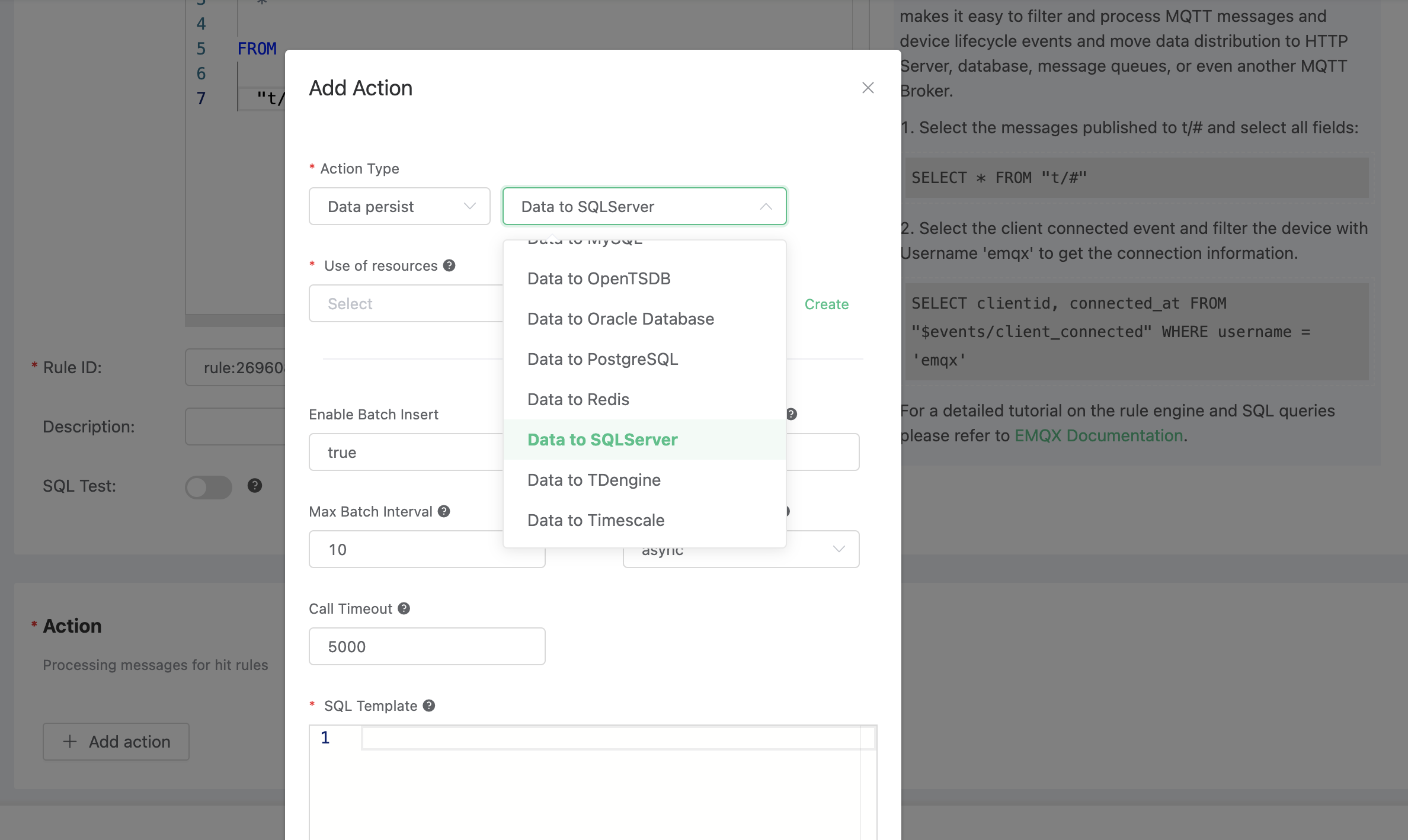
Fill in the action parameters:
The "Save data to SQLServer" action requires two parameters: 1). SQL template. In this example, we insert a piece of data into SQL Server, and the SQL template is:
insert into t_mqtt_msg(msgid, topic, qos, payload) values ('${id}', '${topic}', ${qos}, '${payload}')2). The ID of the associated resource. Now the resource drop-down box is empty, and you can click "New Resource" in the upper right corner to create a SQL Server resource. In the popup dialog box, configure as instructed below: input “mqtt” for database name, “sa” for user name, and “mqtt_public” for password.
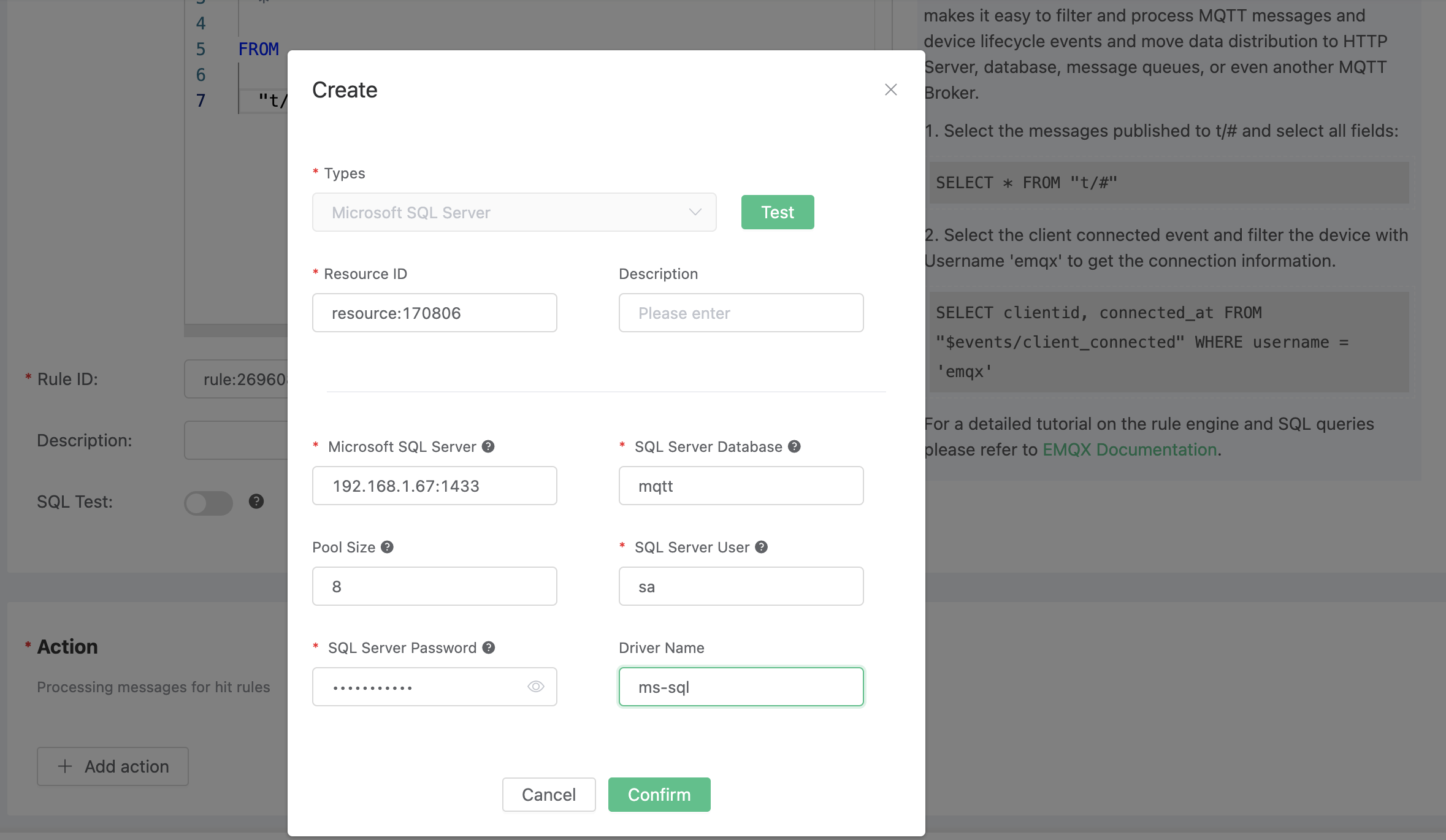
Click the "Confirm" button.
Return to the response action interface and click "OK".
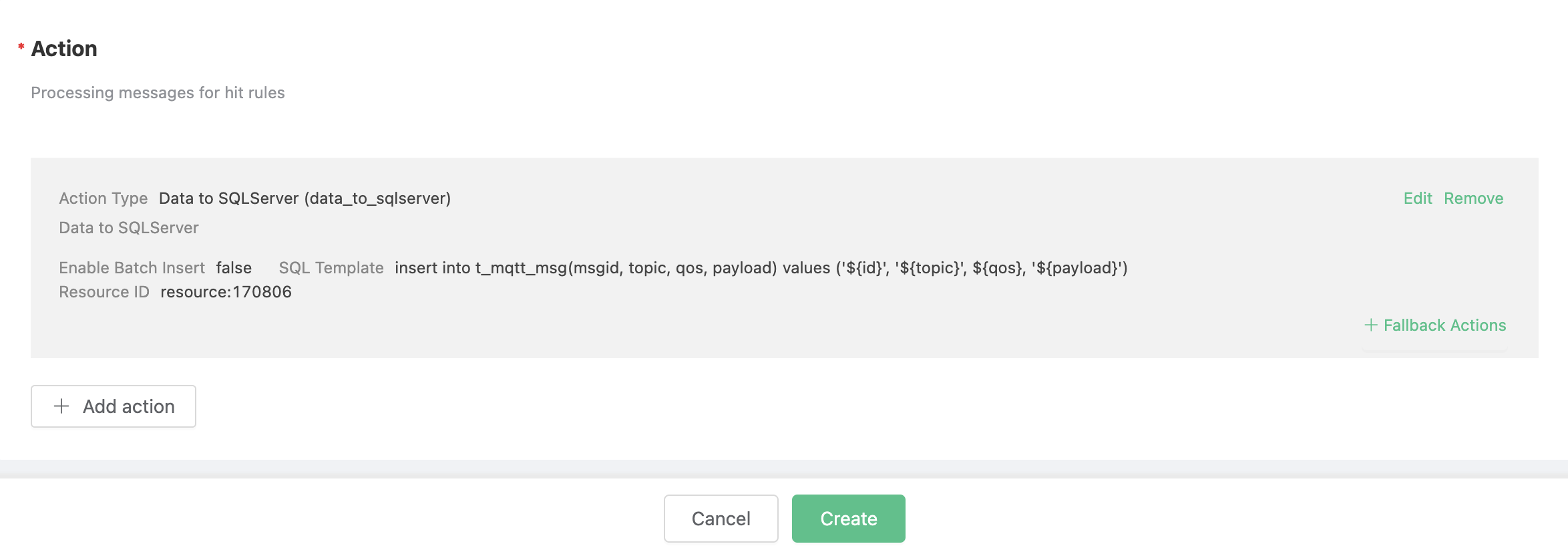
Return to the rule creation interface and click "Create".
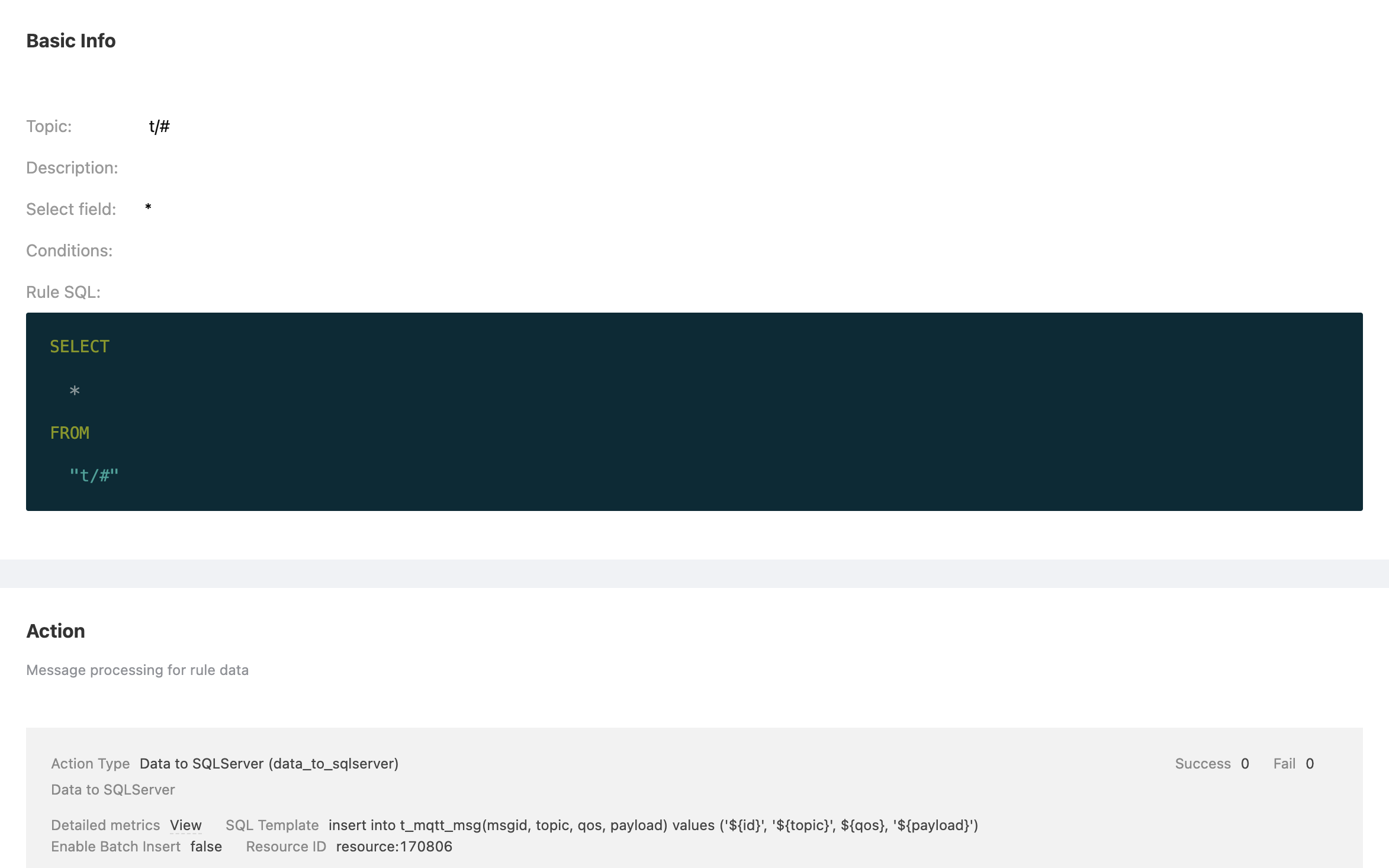
Test the Rule
The rule has been created. Now, send a piece of data:
Topic: "t/a"
QoS: 1
Payload: "hello"In the rule list, click the "View" button or the rule ID connection to preview the rule you just created:
Here we can see that metrics have been increased.
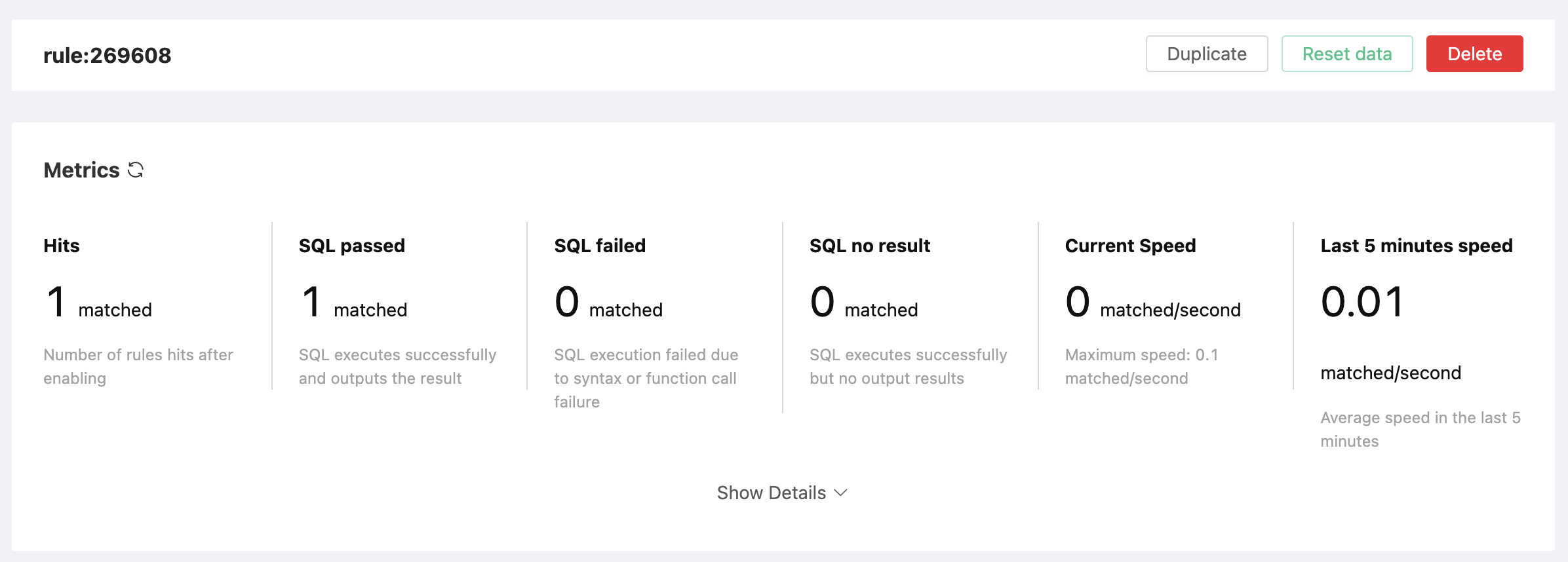
Then check the SQL Server table to see whether the new record is added successfully:
